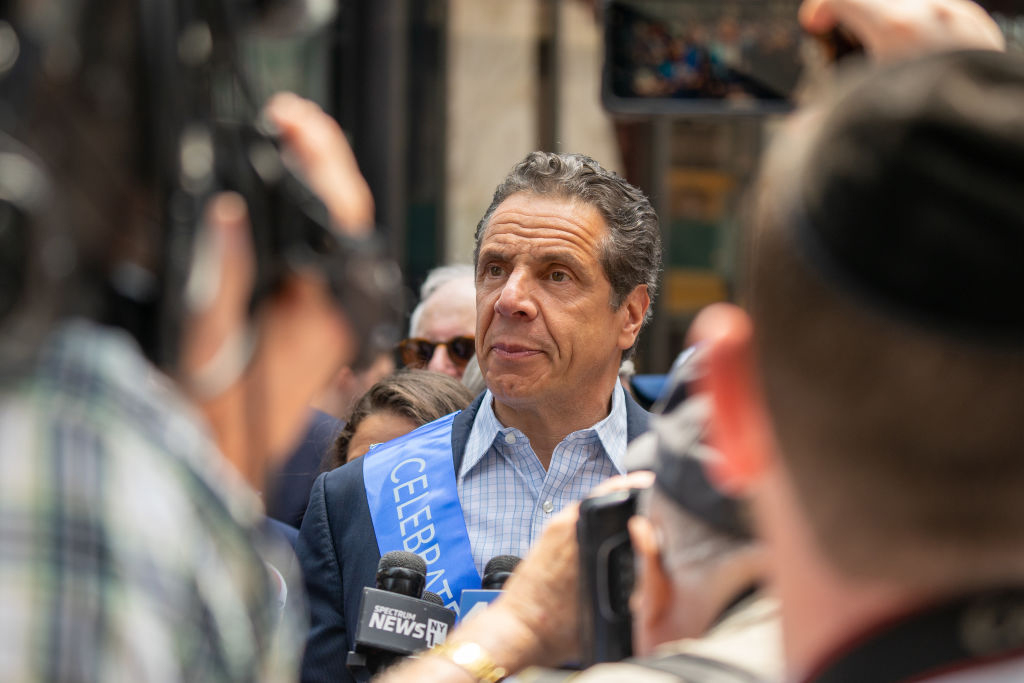When lawmakers in Albany passed the state budget last spring, Gov. Andrew Cuomo declared it “both timely and fiscally responsible.” Timely was true enough. But fiscally responsible? Not so much.
In a maneuver disclosed weeks later, Cuomo balanced his latest budget with some fiscal sleight-of-hand — deferring $1.7 billion in state Medicaid payments to health insurance plans and providers for one month, from the end of fiscal 2019 to the beginning of fiscal 2020.
As the Empire Center’s Bill Hammond noted, the delay brought to mind some of former Gov. Mario Cuomo’s most notorious budget gimmicks, including state payroll lags and the “sale” of Attica prison to the Urban Development Corp.
But unlike his father, whose early 1990s budgets were awash in red ink, the current Gov. Cuomo had billions of dollars in cash on hand when he chose to put off paying his bills in March. So why defer? The answer boils down to optics: That added $1.7 billion would have broken through Cuomo’s misleadingly named “global cap” on the state-funded share of Medicaid spending — as well as his 2% cap on total state spending.
By pushing last year’s $1.7 billion problem into this year, the governor has created another potential budget headache. He could solve it by using his power to unilaterally reduce Medicaid provider fees, or by tapping potential Medicaid “savings actions and offsets” cited in his most recent plan update. He also hasn’t ruled out delaying payments yet again next spring, if that is what it takes to maintain the impression that he is staying under the Medicaid cap.
Even putting aside the Medicaid shuffle, there are reasons to be increasingly concerned about the state’s fiscal outlook over the next few years.
While Cuomo has eliminated most of the enormous budget gap he inherited eight years ago, the state still has a “structural” budget imbalance, Comptroller Thomas DiNapoli noted in his latest budget analysis. Under current law, state spending on hypothetical autopilot would grow by an average of 4.1% a year from fiscal 2021 through 2023, pointing to budget gaps of $3.9 billion to $4.7 billion during the period.
To prevent those gaps from yawning, Cuomo remains committed to holding state-funded spending growth to 2% a year. But in recent years, he has had to manipulate numbers to accomplish it.
Adjusting for the book-keeping shifts, but without counting the Medicaid deferral, DiNapoli estimates this year’s state spending increase comes to 5.7%. That number, not 2%, is closer to reflecting the state’s actual fiscal blood pressure.
On the positive side, Cuomo has added to the state’s budget reserves. He owes this achievement largely to an unprecedented stroke of good luck: Since 2014, Albany has reaped $12 billion payments from financial institutions looking to settle various civil penalties. Half of that money has been spent, and much of the rest has been committed to various capital projects and programs over the next three years. Meantime, the governor also gets to treat it as part of his cash cushion.
Despite that windfall, Cuomo also plans to borrow more. State debt is now slated to increase by $14 billion, or 26%, over the next five years, according to the comptroller’s estimate. More long-term borrowing will equate to higher annual debt service, which also is slated to increase.
Last but not least, at this late point in the economic cycle, the Legislature has shifted markedly to the left. While the former state Senate Republican majority was far from tightfisted, the large progressive bloc in the new Democratic majority will be more likely to double down on a soak-the-rich tax strategy if and when money runs short.
Cuomo already has renewed a supposedly temporary millionaire tax four times in eight years. But he has also warned the new federal cap on state-tax deductions has given New York’s highest earners an added incentive to pull up stakes.
Looking ahead, when the inevitable next economic downturn hits, the governor could have a bigger legislative fight on his hands if he chooses to rein in spending rather than raise taxes higher.
Meanwhile, to keep up the appearance of tight budget control, he’s cooking the books.
This piece originally appeared at the New York Post
______________________
E.J. McMahon is research director at the Empire Center for Public Policy and an adjunct fellow at the Manhattan Institute.
This piece originally appeared in New York Post


